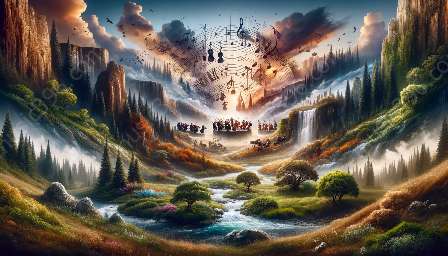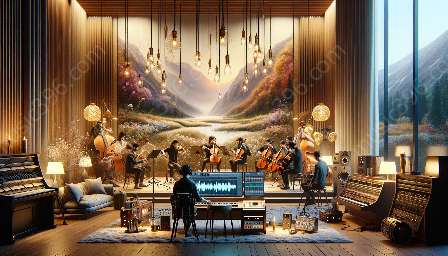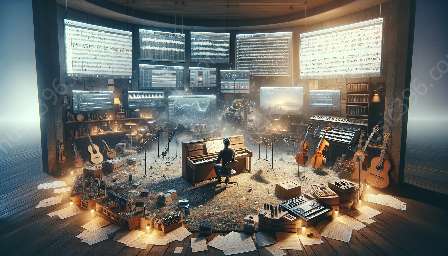Subliminal messaging in film and television scores has long been a point of interest and fascination for both audiences and researchers. As composers strategically weave their music into the fabric of visual storytelling, numerous subtle cues and hidden patterns emerge, often affecting viewers on a subconscious level. Through an analysis of film and television scores and a study of music theory, one can gain a better understanding of the use and impact of subliminal messaging in this context.
The Use of Subliminal Messaging in Scores
Subliminal messaging in film and television scores involves the strategic integration of psychological and emotional triggers through musical elements. Composers carefully select tones, pitches, rhythms, and instrumentation to create a subliminal layer of communication that complements and enhances the on-screen action. These subtle cues and patterns can elicit specific emotions, create tension, or amplify the impact of visual storytelling without being overtly noticeable to the conscious mind.
For example, a composer might utilize low-frequency sounds or dissonant chords to evoke feelings of unease or suspense during a suspenseful scene. In contrast, gentle, flowing melodies may reinforce a sense of romance or nostalgia without drawing direct attention to the music itself. These nuanced musical choices can significantly impact the audience's emotional and psychological experience, often without their explicit awareness.
Impact on Viewers
The impact of subliminal messaging in scores on viewers is profound, as it influences their emotional and psychological responses to on-screen content. When seamlessly integrated into a film or television show, subliminal messaging in scores has the power to heighten tension, enhance empathy, and create a more immersive viewing experience. Viewers may find themselves drawn deeper into the narrative, feeling the intended emotions more intensely, and forming stronger connections with the characters and plot.
Furthermore, subliminal messaging in scores can contribute to the memorability and impact of specific scenes or moments within a production. By tapping into the subconscious mind, composers can leave a lasting impression on the audience, shaping their perception and interpretation of the visual content. Whether through subtle motifs, thematic variations, or carefully orchestrated sonic nuances, these subliminal elements can linger in the viewers' minds long after the credits roll.
Relationship to Music Analysis
Analyzing film and television scores from the perspective of music theory and composition unveils the intricate layers of subliminal messaging embedded within the music. By examining the harmonic progressions, melodic contours, rhythmic patterns, and instrumental choices, one can decipher the intentional use of subliminal cues and messaging by composers. Moreover, understanding the emotional and psychological effects of different musical elements allows for a deeper appreciation of the symbiotic relationship between sound and image.
Music analysis provides a framework for unraveling the complexities of subliminal messaging in scores, shedding light on how composers manipulate musical language to convey subtle, indirect messages to the audience. It offers a means of dissecting and interpreting the psychological impact of specific musical decisions and their contribution to the overall narrative and audiovisual experience.
Conclusion
Subliminal messaging in film and television scores represents a captivating intersection of music, psychology, and visual storytelling. The covert influence of carefully crafted musical cues adds an extra dimension to the audience's engagement with on-screen content, shaping their perceptions and emotional responses in profound ways. Through a comprehensive analysis of film and television scores and an exploration of music theory, one can gain deeper insights into the art and impact of subliminal messaging, fostering a richer understanding of the interconnected realms of music and visual media.

































